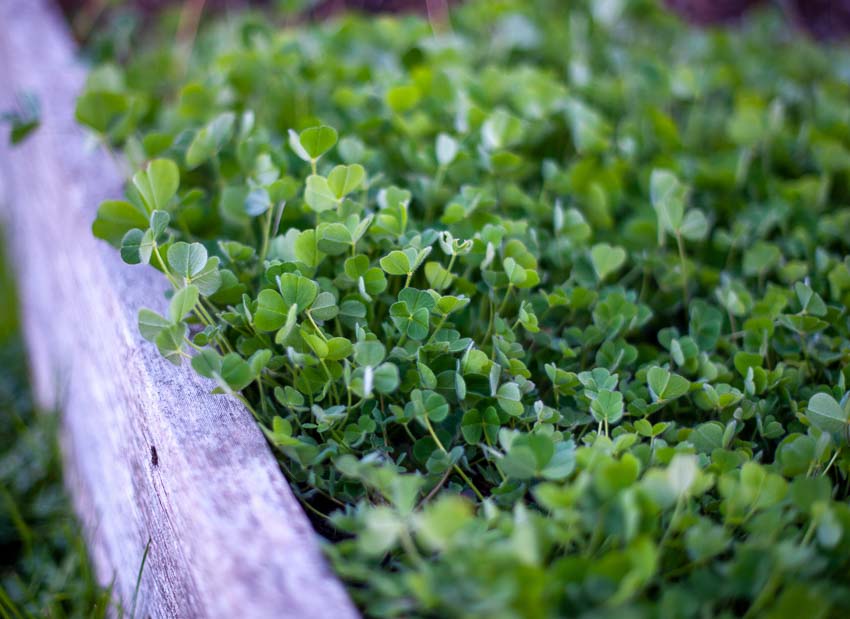Cover crops for gardens are becoming more popular and can be used on any size garden. Discover the benefits of Midwest cover crops and learn how to choose the best ones for protecting your garden.
First, What are Cover Crops?
Throughout history, farmers have used cover crops to add nutrients to their soil and stabilize their land during the winter. As topsoil depletion threatens the Midwest, many of today’s farmers are learning about the importance of incorporating cover crops into their crop rotation.
Cover crops are plants that people sow and cultivate to protect the ground and prevent weed infestations. They are then tilled into the soil before planting the main crop.
Key Characteristics of Effective Cover Crops
You can use many different species of plants as cover crops. The best cover crops have the following key characteristics:
- Germinate quickly and vigorously
- Provide good cover to block out weed growth
- Tolerate adverse conditions with exceptional hardiness
- Have dense root systems that stabilize soils and control erosion
- Require little to no care
The best cover crops are inexpensive to plant and are tilled into the soil for use as green manure.
The Life Cycle of Cover Crops
You can grow cover crops at all times of the year and can be annuals or perennials. It’s important to understand the life cycle of various cover crops to determine which is the best choice for your Midwest garden.
Planting Timelines
Cover crops can be grown any time of year. While many cover crops are annuals, farmers also use perennial cover crops to stabilize soils, fix nitrogen, and revitalize depleted farmlands.
Most Midwest gardeners use winter cover crops to protect their gardens after harvesting their edible crops. They often choose a cold hardy annual cover crop to plant in late summer or early fall.
Like hardy garden vegetables, there are some cold-weather cover crops that tolerate cool temperatures. Crops like winter wheat and rye will continue to grow through most of the winter. You can till them into your soil in the spring.
Planting a warm-season cover crop in the spring will improve the soil structure, add nutrients, and protect the microorganisms in the ground throughout the summer. It’s the perfect solution for that patch of your garden that you’ve set aside for planting cold-hardy vegetables in the fall.
Growth and Decay Phases
Typically, you allow your cover crop to grow until about two to six weeks before you’re ready to plant. It would help if you allowed time for the cover crop foliage to decay in the soil before planting. This will give it time for the soil food web to break it down.
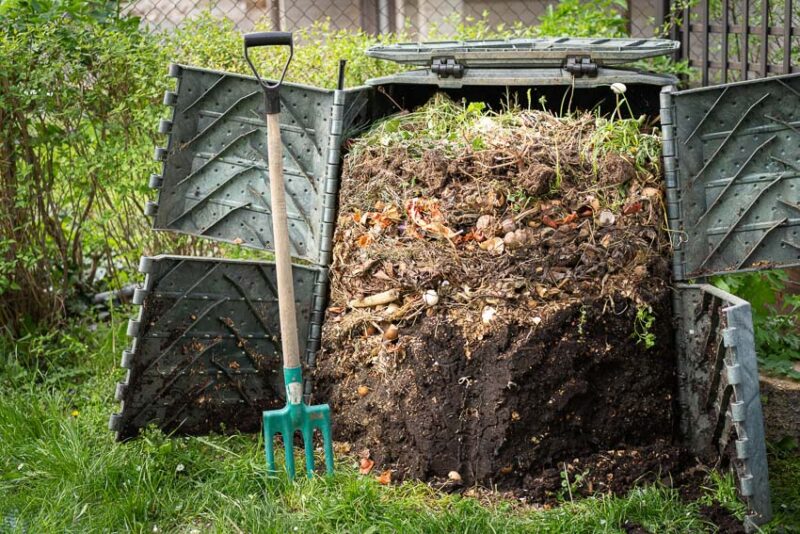
However, you don’t want to let your cover crop go to seed, so you may need to mow it down or till it sooner. Some gardeners like to cut their cover crop and use the green material to give their compost piles a nitrogen boost. You can also mow it and let it decompose on top of the soil before tilling it in.
For no-till cover crops in vegetable gardens, you can mow the cover crop, place a silage tarp over it, and it will be ready to plant after a few weeks.
The Importance of Cover Crops for Gardens During Winter
Cover crops play essential roles in protecting your garden during the winter.
Roles in Soil Protection and Enrichment
Learn more about the roles of cover crops in protecting and enriching your soil.
Erosion Prevention
Agents of change, such as wind, water, ice, and gravity, move soil particles, causing erosion. In gardens, you work hard to improve your soil and want it to stay put.
The best cover crops have extensive root systems that hold the ground in place, and their foliage helps to reduce the impact of rain, snow, and wind.
Nutrient Cycling and Soil Structure
There are a lot of nutrients in the subsoil. Cover crops with deep roots can bring those nutrients up to the top layer, thus protecting your garden plants.
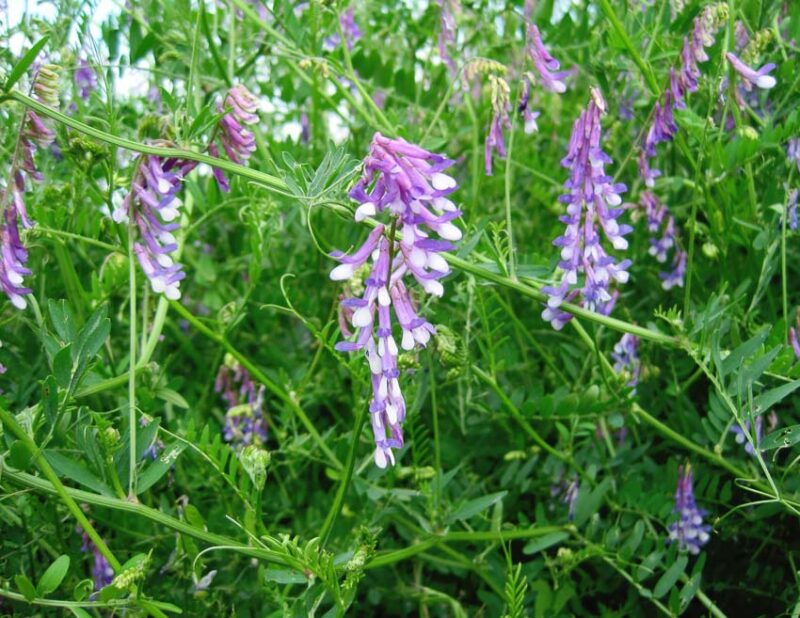
Once they decompose, the organic matter of cover crops improves your soil structure. Some types of nitrogen-fixing cover crops, such as hairy vetch, alfalfa, and clover, also trap substantial amounts of nitrogen in their roots.
Pests and Disease Management
Suppressing pest populations and reducing diseases is another important reason to use cover crops.
Suppressing Pest Populations
One of the main reasons that gardeners and farmers rotate their crops is to suppress pest populations. Cover crops further help to break up pest life cycles. Insects can quickly become used to human patterns of growing crops, and using various types of cover crops shakes things up.
Reducing Disease Incidence
No matter where you live, the health of your crops is dependent on the microbial life in your soil.
Naturally occurring microbes, like nematodes and other beneficial insect predators, live in the soil and help reduce the occurrence of insect infestations. Using cover crops creates a hospitable environment for these microbes, which helps protect your garden from pests and fungal diseases.
The Benefits of Cover Crops in a Midwestern Winter
Learn more about the benefits of Midwest cover crops.
Weathering the Weather
Mother Nature didn’t intend the earth to be bare throughout the long Midwestern winters. Using cover crops emulates how plants naturally shield the soil from harsh weather conditions.
The agents of erosion are your soil’s enemies during the winter, and when your ground is left bare, the wind, rain, snow, and water runoff can wreak havoc on your soil. A cover crop will allow the soil to absorb and retain moisture without eroding.
Compaction is another common problem affecting soils left bare over the winter. The cover crop will absorb the impact of raindrops, reducing soil compaction.
In the spring, cover crops reduce the amount of water in the topsoil, so your ground dries faster, contributing to increased soil temperatures. That means you’ll be able to work the soil sooner in the spring.
Learn about the tools you can use to reduce soil compaction. Explore our guide to spike and core aerators.
Boosting Biodiversity and Ecosystem Health
Cover crops also contribute to ecological diversity and improve the health of regional ecosystems.
Enhancing Habitat Diversity
Cover crops enhance biodiversity by encouraging the growth of beneficial microorganisms in the soil. Microbes at the bottom of the food chain, such as bacteria and fungi, play a crucial role in decomposing organic matter and releasing nutrients critical for plant growth.
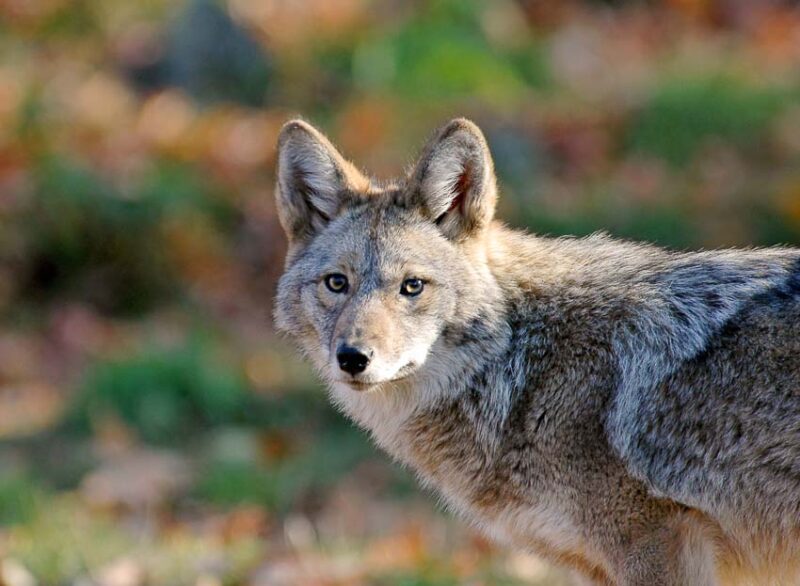
Cover crops further create diverse ecosystems by providing forage and shelter for wildlife. By providing cover for insect populations, birds, and small mammals, they can also create food sources for predators like raptors, coyotes, and foxes, creating a more balanced ecosystem that will reduce the need for pesticides and insecticides.
Attracting Beneficial Insects
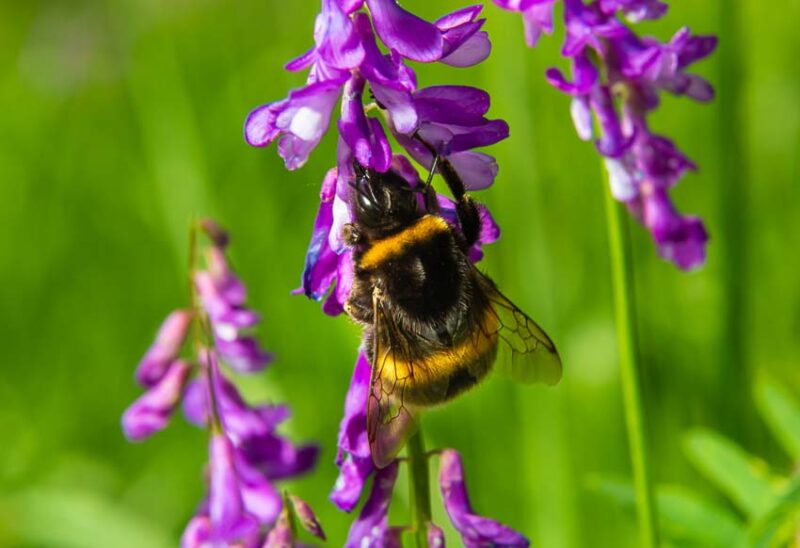
Cover cropping also attracts beneficial pollinators responsible for pollinating about one-third of global food crops. Since the number of beneficial pollinators has declined, this is an excellent reason to grow them. In fact, many beekeepers plant cover crops to sustain their hives.
Key Midwest Cover Crops
What are the best cover crops for Midwest gardens? Explore the various varieties that thrive in this Midwestern United States before deciding which is the right cover crop for your garden.
Exploring Different Varieties
Good cover crops for vegetable gardens include grains like rye, wheat, and oats or legumes such as clover and vetch.
Rye, Oats, and Other Grains
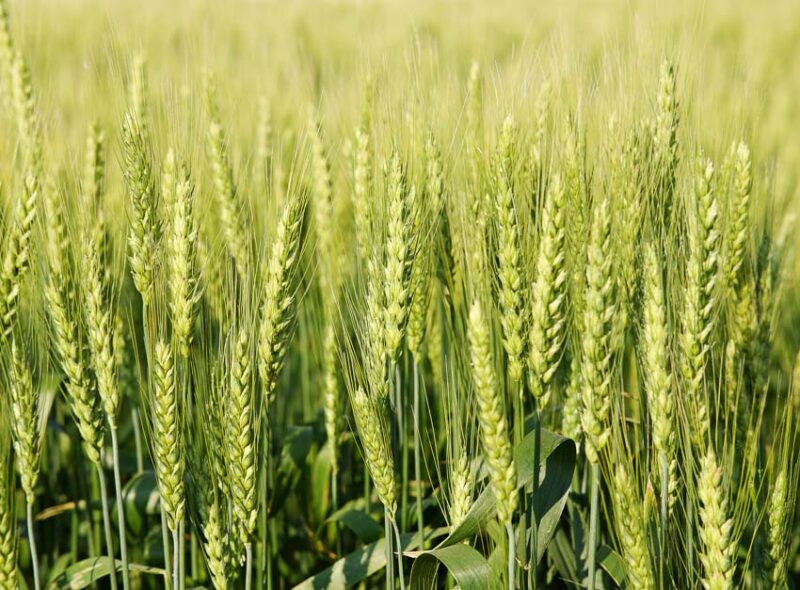
Agricultural grains are almost all annuals, and when planted in the fall, they make excellent winter cover crops for small gardens.
Many of them are fast-growing, producing abundant foliage. Many are cold tolerant, and they’ll succumb to winter kill, making terminating your cover crop a simple task.
Legumes like Clover and Vetch
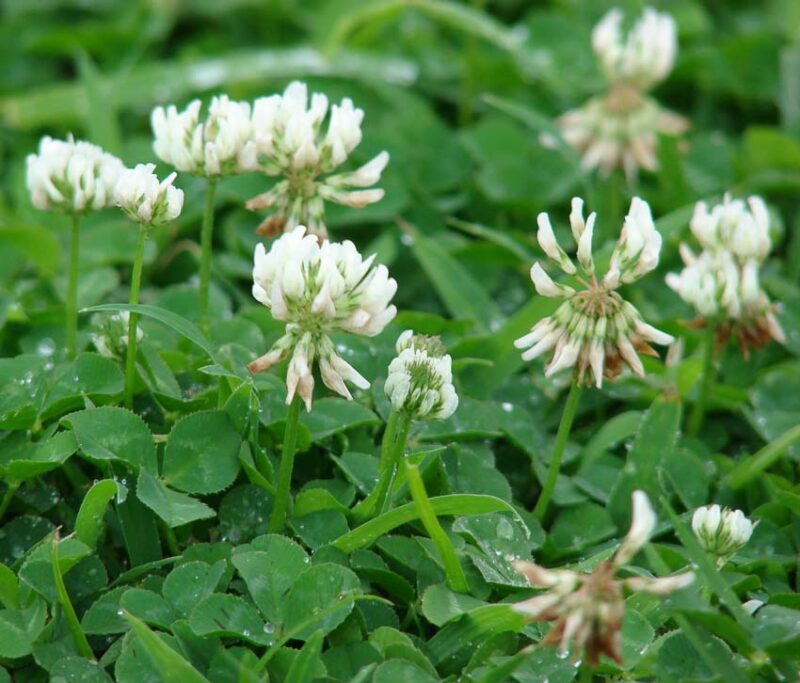
Growing legumes like clover and vetch offer the additional benefit of fixing nitrogen into your soil. They produce the majority of their biomass and nitrogen in the spring, making them an excellent choice as a spring cover crop.
Choosing the Right Cover Crop for Your Garden
How do you choose which cover crop to use for your garden? There are so many options, and they all have advantages. Find the ones that will grow in your region, then factor in your gardening goals.
Cover crops can be grown during any season, so the next step is to choose a cover crop that will grow during your chosen planting season. In the Midwest, fall cover crops for vegetable gardens are common.
Next, choose an annual or perennial cover crop. Annuals are the most common types of cover crops for gardens, and they have various growth rates, which is another factor to consider.
How you plan to terminate your cover crop is another crucial factor affecting your decision. Depending on the season, you can terminate crops by mowing, cutting, lopping, or allowing them to winter kill.
Planting No-Till Cover Crops in Vegetable Gardens
No-till farming is used to enhance the health of your soil, and this method is becoming more popular in vegetable gardening. Learn about the principles and benefits of no-till farming.
Introduction to No-Till Farming
The guiding principle of no-till farming is that soil health is the priority, and tilling is hard on your soil. Cover crops are used in no-till farming to provide a continuously living cover on your soil, improving the soil’s health.
Several benefits of no-till farming methods include improved soil structure, moisture retention, increased organic matter, and more available nutrients in your soil. This farming method reduces soil erosion, prevents pollution, and reduces labor costs associated with tilling.
Step-by-Step Guide to Planting
Learn how to plant cover crops with this no-till, step-by-step planting guide.
Preparing the Ground
If you’re using a no-till method, lay a tarp over the area for a few weeks to smother the existing plants. You may need to mow tall cover crops, and you can either rake up the foliage or leave it lay. After a few weeks under a tarp, the foliage will become dry and brittle, and you can sow the seed directly on top.
Sowing and Maintaining Cover Crops
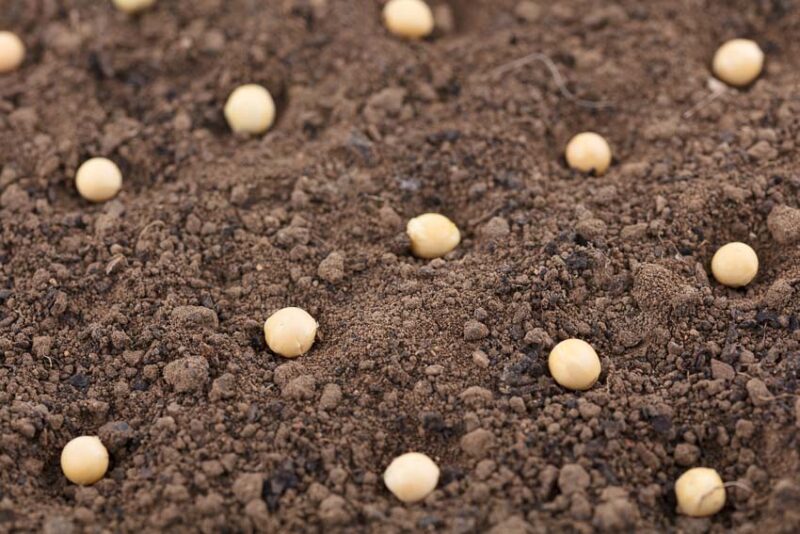
When sowing cover crops, it’s essential to plant them at the right depth. Plant them too deep, and they won’t get enough light to germinate. If they’re too shallow, they will dry out.
Sow large seeds at a depth of about ½ inch. For tiny seeds, you can lightly rake them into the soil. Water them in and keep them moist until they are established.
Most cover crops don’t require a lot of maintenance, however, you don’t want to let them go to seed. Otherwise, they can be just as problematic as weeds in your garden.
FAQs About Protecting Your Garden with Midwest Cover Crops
When is the best time to plant cover crops in the Midwest?
Cover crops can be planted during different times of the year, and the best time to plant them in the Midwest depends on your growing zone, intended purpose, and the crop you’re planting. As a resource, the Midwest Cover Crops Field Guide has an excellent timetable for various gardening zones in the region.
How do I choose the right cover crop for protecting my garden?
To choose the right cover crop for your garden, consider your timeline and choose between winter and warm-season cover crops. Then, choose one based on how fast it grows. Finally, choose a cover crop matching the termination method you plan to use.
Can cover crops be used in small-scale home gardens?
Cover crops aren’t just for farmers and market gardeners. You can use cover crops in any size garden, even small raised beds.
What happens to cover crops when winter ends?
There are two main types of winter cover crops. One type is winter-killed cover crops like oats, wheat, rye, and spelt. These produce abundant foliage in the fall before cold temperatures kill them. The other type is winter-dormant crops, such as vetch, clover, and Austrian peas. These crops go dormant but can overwinter in many areas.
Will cover crops compete with my garden plants?
Generally, cover crops don’t compete with garden plants because they are grown at different times of the year. While your garden is not producing edible garden plants, cover crops are used to protect and enrich the soil.

